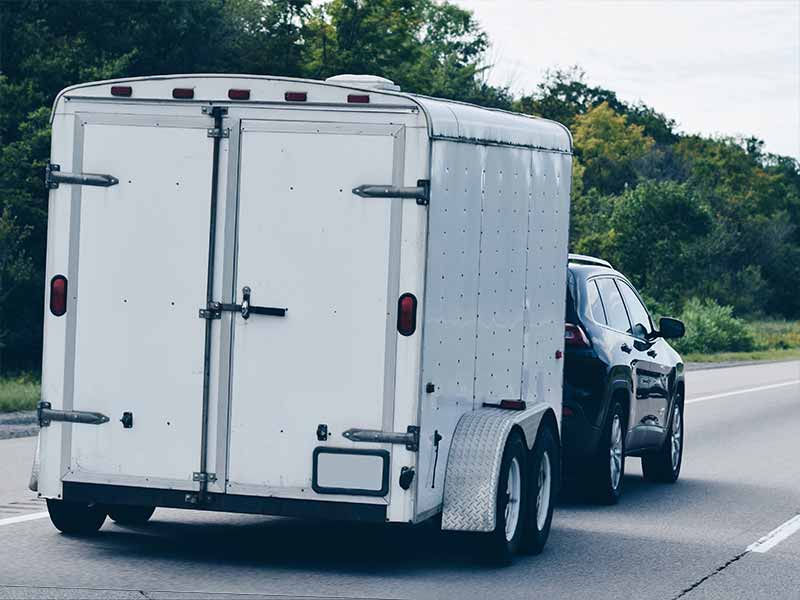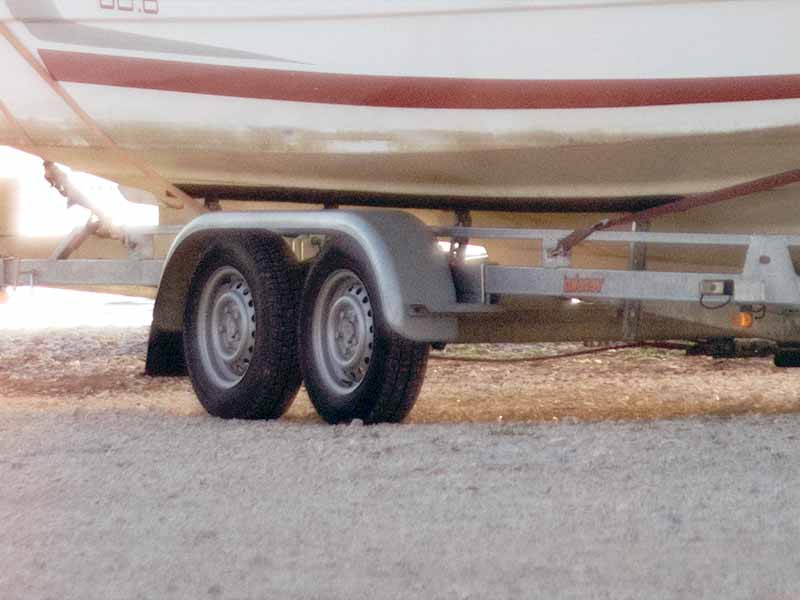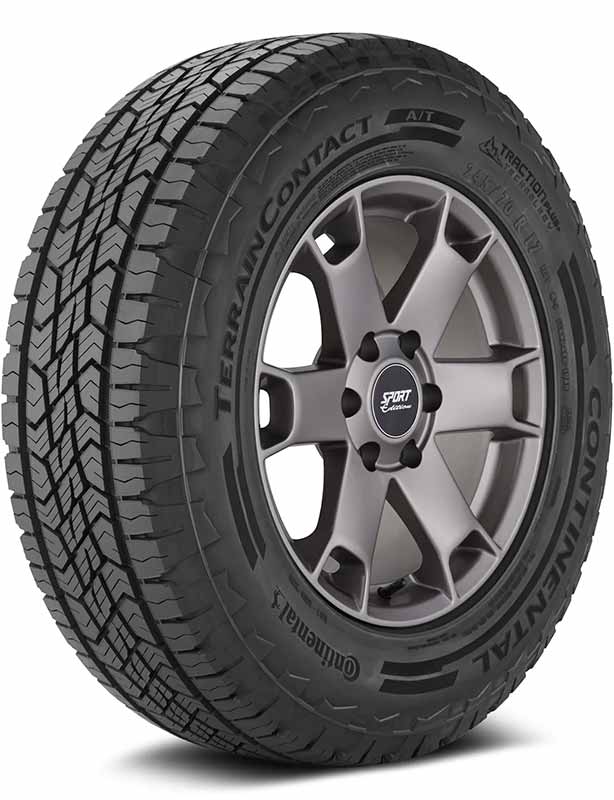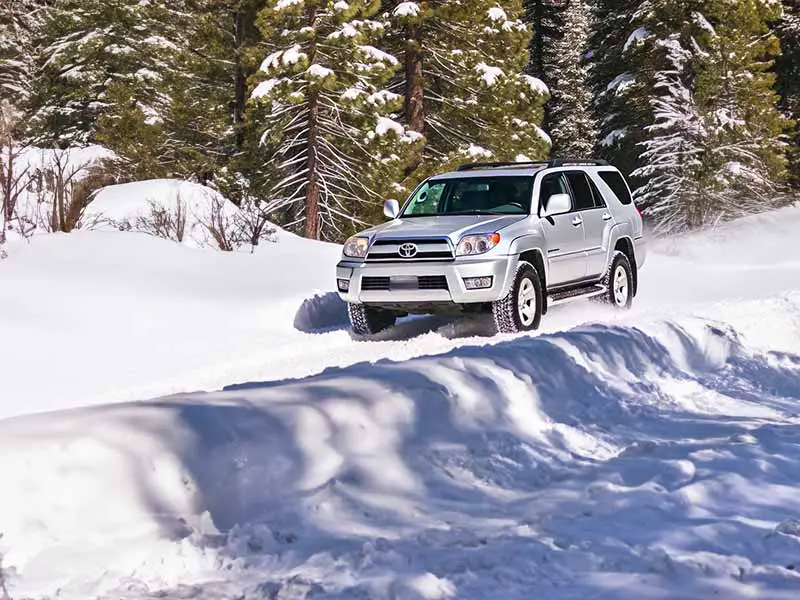You’ve invested in a trailer, and now you’re faced with the crucial decision of choosing the right trailer tires. It’s not just about the size or the brand; it’s also about understanding how trailer weight affects the required trailer tire load capacity.
So, how do you make the right decision?
What Load Range Tire Do I Need For My Trailer?
To determine the minimum load capacity each trailer tire should have, divide the trailer’s GVWR (Gross Vehicle Weight Rating) by the number of trailer tires.
Then, add a safety margin to account for potential weight distribution discrepancies and dynamic forces, increase this calculated load capacity by 15% to determine the ideal load capacity for each tire.
In this article, we’ll delve deep into understanding trailer tire load ranges and their respective weight capacities.
We’ll also explore the differences between various tire types, the importance of adhering to weight limits, and common mistakes to avoid.
Trailer Tire Required Load Capacity Calculator
This Calculator Is Designed To Give You A Reasonable Estimate Of The Load Carrying Capacity Required For Each Tire. You Should Consult With A Professional To Ensure The Tires You Purchase Meet Your Specific Needs.
Standard Weight Capacities For Each Load Range
There are standard weight capacities associated with each load range, especially for trailer tires. However, it’s important to note that the exact weight a specific tire can support within a given load range can vary based on the tire’s size and the manufacturer’s specifications.
For trailer tires (ST or Special Trailer tires), the general weight capacities for common load ranges are as follows:
- Load Range B: Typically up to 1,100 to 1,520 lbs per tire at maximum inflation.
- Load Range C: Typically up to 1,760 to 2,270 lbs per tire at maximum inflation.
- Load Range D: Typically up to 2,205 to 3,000 lbs per tire at maximum inflation.
- Load Range E: Typically up to 2,470 to 3,415 lbs per tire at maximum inflation.
- Load Range F: Typically up to 3,500 to 3,960 lbs per tire at maximum inflation.
- Load Range G: Typically up to 3,960 to 4,400 lbs per tire at maximum inflation.
- Load Range H: Typically up to 4,805 to 5,675 lbs per tire at maximum inflation.
- Load Range J: Typically up to 6,005 to 6,610 lbs per tire at maximum inflation.
- Load Range L: Typically up to 7,000 to 7,800 lbs per tire at maximum inflation.
Again, these are general figures, and the exact weight capacity can vary based on the tire’s size and specific design. For instance, a larger diameter tire within the same load range might have a different weight capacity than a smaller one.
To get the most accurate weight capacity for a specific tire, it’s always best to refer to the tire’s sidewall, the manufacturer’s specifications, or the tire’s load and inflation table.

Decoding Trailer Tire Load Ranges and Their Capacities
Choosing the right trailer tires isn’t just about size or brand. It’s also about understanding the tire’s load range. This tells you how much weight the tire can safely carry. Let’s dive into what load ranges are and how to decode them.
What is Load Range?
Load range is a way to measure a tire’s strength. It tells you how much weight a tire can carry when it’s inflated to its maximum safe pressure.
I met a camper who had frequent tire blowouts. After some discussion, we realized that the tires he was using had a lower load range than needed. The tires simply couldn’t handle the trailer’s weight. Always make sure your tires match or exceed your trailer’s weight requirements.
Learn more about different tire load ranges here.
Special Trailer (ST) Tire Load Range and Ply Rating Chart
| Load Range | Ply Rating | Typical Load Capacity | Max Load Carrying PSI |
| B | 4 | 1,100 to 1,520 lbs | @ 35 PSI |
| C | 6 | 1,760 to 2,270 lbs | @ 50 PSI |
| D | 8 | 2,205 to 3,000 lbs | @ 65 PSI |
| E | 10 | 2,470 to 3,415 lbs | @ 80 PSI |
| F | 12 | 3,500 to 3,960 lbs | @ 95 PSI |
| G | 14 | 3,960 to 4,400 lbs | @ 110 PSI |
| H | 16 | 4,805 to 5,675 lbs | @ 125 PSI |
| J | 18 | 6,005 to 6,610 lbs | @ 140 PSI |
| L | 20 | 7,000 to 7,800 lbs | @ 160 PSI |
Load Range Vs Load Index
The weight a load range tire can handle at given psi is dependent on the specific tire’s load range designation and its load index. Each load range has a maximum load capacity, but this capacity is typically given for the tire’s maximum inflation pressure.
To determine the exact weight a tire can handle at a given psi, you would need to refer to the tire’s load inflation table provided by the manufacturer. This table will give the load capacity for various inflation pressures.
However, as a general guideline:
- Load Range B: Typically found on some passenger tires and smaller trailer tires. They can generally handle 1,100 lbs to 1,520 lbs at their maximum psi, which is usually around 35 psi.
- Load Range C: Typically found on passenger tires and some light truck tires. They can generally handle 1,760 lbs to 2,270 lbs at their maximum psi, which is usually around 50 psi.
- Load Range D: Commonly found on light truck tires. They can generally handle 2,205 lbs to 3,000 lbs at their maximum psi, which is usually around 65 psi.
- Load Range E: Also for light truck tires. They can generally handle 2,470 lbs to 3,415 lbs at their maximum psi, which is usually around 80 psi.
- Load Range F and Load Range G: These are for heavier duty truck tires. Their capacities can range even higher.
Remember, these are general figures for the maximum psi. At 35 psi, the weight capacity would be less. Always consult the tire’s load inflation table or the manufacturer’s specifications to get accurate weight capacities for a specific psi.
Tire Load Index Chart
The full chart ranges from 0 to 150 but we will abbreviate it to 70 through 126 since the more extreme numbers are much less common. You can view the full chart at Discount Tire.
| Load Index | Carrying Capacity (pounds) |
|---|---|
| 70 | 739 |
| 71 | 761 |
| 72 | 783 |
| 73 | 805 |
| 74 | 827 |
| 75 | 853 |
| 76 | 882 |
| 77 | 908 |
| 78 | 937 |
| 79 | 963 |
| 80 | 992 |
| 81 | 1,019 |
| 82 | 1,047 |
| 83 | 1,074 |
| 84 | 1,102 |
| 85 | 1,135 |
| 86 | 1,168 |
| 87 | 1,201 |
| 88 | 1,235 |
| 89 | 1,279 |
| 90 | 1,323 |
| 91 | 1,356 |
| 92 | 1,389 |
| 93 | 1,433 |
| 94 | 1,477 |
| 95 | 1,521 |
| 96 | 1,565 |
| 97 | 1,609 |
| 98 | 1,653 |
| Load Index | Carrying Capacity (pounds) |
|---|---|
| 99 | 1,709 |
| 100 | 1,764 |
| 101 | 1,819 |
| 102 | 1,874 |
| 103 | 1,929 |
| 104 | 1,984 |
| 105 | 2,039 |
| 106 | 2,094 |
| 107 | 2,149 |
| 108 | 2,205 |
| 109 | 2,271 |
| 110 | 2,337 |
| 111 | 2,403 |
| 112 | 2,469 |
| 113 | 2,535 |
| 114 | 2,601 |
| 115 | 2,679 |
| 116 | 2,756 |
| 117 | 2,833 |
| 118 | 2,910 |
| 119 | 2,998 |
| 120 | 3,086 |
| 121 | 3,197 |
| 122 | 3,307 |
| 123 | 3,417 |
| 124 | 3,527 |
| 125 | 3,638 |
| 126 | 3,748 |
Explanation of the Tire Load Index Chart and Its Relevance
The tire load index chart is a standardized table that matches a tire’s load index number to its specific weight-carrying capacity. For instance, a load index of 91 might correspond to a maximum weight of 615 kg.
Understanding this chart is essential for:
- Ensuring your vehicle’s tires can handle its weight, especially when fully loaded.
- Making informed decisions when replacing tires.
- Optimizing vehicle performance and safety.
For a comprehensive understanding of how the tire load index impacts your driving experience, explore our in-depth article on Tire Load Index.
The Role of Tire Pressure in Load Capacity
Tire pressure might seem like a small detail, but it plays a significant role in how your trailer tires perform. Let’s explore why tire pressure is crucial and how it affects your tire’s load capacity.
Why Tire Pressure Matters
Tire pressure is the amount of air inside your tire. It’s measured in pounds per square inch (PSI). Keeping the right tire pressure ensures:
- Safety: Properly inflated tires reduce the risk of blowouts.
- Tire Life: Correct pressure helps your tires wear evenly and last longer.
- Performance: Your trailer will handle better and give a smoother ride.
I can’t stress enough how vital tire pressure is. Incorrect pressures cause uneven tire wear and can reduce the load carrying capacity of the tires which could lead to premature tire failure.
How Tire Pressure Affects Load Capacity
Your tire’s load capacity is based on its maximum safe pressure. If your tire isn’t inflated to that pressure, it can’t carry its full weight rating.
- Underinflated Tires: These can’t carry as much weight. They also heat up faster, which can lead to blowouts.
- Overinflated Tires: These give a rough ride. They’re also more likely to get damaged by potholes or debris.
When towing a heavy load, I always double-check my tire pressure. It’s a habit I picked up after seeing firsthand the impact of incorrect pressure on tire performance and safety.
For a deeper dive into tire pressure, especially when towing, check out this guide.

Common Mistakes to Avoid
When it comes to trailer tires, there are some common pitfalls that many people fall into. Being aware of these mistakes can save you time, money, and potential headaches. Let’s go over these errors and how to steer clear of them.
Not Paying Attention To All Tire Requirements
Be sure to ensure your trailer tires meet all of your requirements. A trailer tire’s speed rating is one that might get overlooked for instance. If you have a lead foot, make sure your tires will be able to keep up.
Using the Wrong Type of Tire
There’s a difference between ST (Special Trailer) and LT (Light Truck) tires. Using the wrong type can lead to:
- Premature Wear: LT tires aren’t designed for the unique movement of trailers.
- Safety Concerns: LT tires might not handle the weight of a heavy trailer.
Overloading the Trailer
Even if you have the right tires, overloading your trailer is a recipe for trouble. Overloading can lead to:
- Tire Blowouts: Excess weight puts too much strain on the tires.
- Reduced Brake Efficiency: Heavier trailers take longer to stop.
- Poor Handling: Overloaded trailers are harder to control, especially at high speeds.
Neglecting Tire Maintenance
Tires need regular care, just like any other part of your vehicle. Neglecting maintenance can result in:
- Uneven Wear: This reduces the lifespan of your tires.
- Reduced Performance: Worn-out tires don’t grip the road as well.
- Safety Risks: Damaged or worn tires are more likely to fail.
I always advise everyone to do regular tire checks. Look for signs of damage, check the tread depth, and ensure they’re properly inflated. It’s a routine I’ve followed for years, and it’s saved me from many potential issues.

Trailer GVWR Sticker/Placard
Understanding Key Terms
When it comes to trailer tires, there are a few terms that you’ll come across often. It’s essential to know what they mean to make the right choices for your trailer. Let’s break them down in simple terms.
Trailer’s GVWR (Gross Vehicle Weight Rating)
GVWR stands for Gross Vehicle Weight Rating. In simple words, it’s the maximum weight your trailer can safely carry. This includes the weight of the trailer itself and everything you load onto it.
- Why is it important? Knowing your trailer’s GVWR helps you pick the right tires. If your tires can’t handle the weight, they might wear out quickly or even fail.
I’ve seen trailers with tires that aren’t fit for the job. It’s not a risk worth taking. Always check the GVWR before buying new tires. You can usually find this number on a sticker or plate on your trailer.
Learn more about tire load index here.
Trailer’s GAWR (Gross Axle Weight Rating)
GAWR, or Gross Axle Weight Rating, is another crucial term. It tells you the maximum weight that each axle of your tandem axle trailer can safely carry.
- Why does it matter? Trailers can have one or more axles. If you overload an axle, it can lead to tire problems or even damage to the trailer.
ST Trailer Tires vs. LT Tires
You might see tires labeled as ST or LT. Here’s what those letters mean:
- ST (Special Trailer) Tires: These tires are made just for trailers. They’re built to handle heavy loads and the unique way trailers move.
- LT (Light Truck) Tires: These are for light trucks, not trailers. They’re made to carry passengers and goods, but they move differently than trailers.
Resources
Below are some links you may find helpful when learning about tires:
- Trailer tire type and specifications (full guide) – Priority Tire
- Tire tips 101: Load range vs. weight rating and more – Motor Trend
Final Thoughts
By understanding the weight capacities associated with each load range and matching to your trailer’s weight, you can ensure a smooth and safe journey.
Remember, the right tire not only enhances the performance of your trailer but also extends the life of the tire, saving you money in the long run.
Always prioritize safety, regularly inspect your tires for wear and tear, and stay informed about the latest in tire technology.
Good luck and happy motoring.




